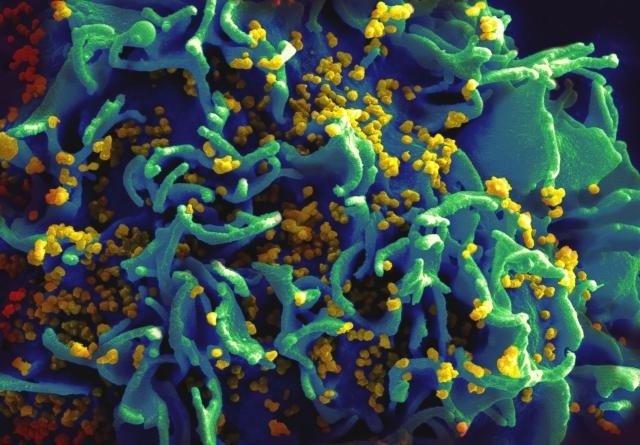HIV can hide within the patient’s body, making it difficult to completely eradicate. With the hopes of finding an HIV cure, researchers from the Belgium-based university UZ Gent recently reported a milestone of locating where the residual virus can be found.
Medical science has come a long way in helping HIV-positive patients get more chances to live a normal life despite not having the virus completely removed from their bodies. The availability of antiretroviral therapy and AIDS inhibitor drugs allow people living with HIV to keep the virus at bay to the point that they can no longer infect others.
Research helps HIV cure study by locating the hiding virus
The study, published in the peer-reviewed journal Cell Host and Microbe, was led by doctor Marie-Angelique De Scheerder and professor Linos Vandekerckhove of the said university. Following their medical investigation, the scientists found out that HIV does not hide in one specific location in the body. Vandekerckhove told De Morgen that the residual virus could be found “everywhere” in a patient’s body.
This helps the HIV cure studies in a way that scientists now know where to look for the remaining virus if they want to completely eradicate them. Vandekerckhove explained that learning that the virus hides in many places in the body makes the process of removing them more complicated as well. “If we want to come to a cure, then a therapy must be developed that focuses on all those places, or different therapies must be combined,” Vandekerckhove said. Nevertheless, this research helps in advancing the study for an HIV cure.
The scientists observed 11 patients who, for the sake of the experiment, suspended taking AIDS inhibitor drugs. The patients report to the researchers twice a week for them to accurately determine the viral count changes through the course of the experiment. They learned that HIV is activated only within 14 to 35 days, and even more quickly after that period since the patients stopped taking their medications.
HIV cure is still elusive
The latest data from UNAIDS estimates that almost 38 million people around the world are living with HIV. While the number of AIDS-related deaths has decreased over the years, many scientists are still hard at work to find a complete cure.
HIV’s nature of clinging on to the CD4 lymphocyte, a kind of white blood cell, is one of the main reasons why it is difficult to cure or remove from the body. This allows HIV also to infect even the cells that should be fighting off other viral infections.



 How do airplanes fly? An aerospace engineer explains the physics of flight
How do airplanes fly? An aerospace engineer explains the physics of flight  The mystery of consciousness shows there may be a limit to what science alone can achieve
The mystery of consciousness shows there may be a limit to what science alone can achieve  Alpha, beta, theta: what are brain states and brain waves? And can we control them?
Alpha, beta, theta: what are brain states and brain waves? And can we control them?  Spacesuits need a major upgrade for the next phase of exploration
Spacesuits need a major upgrade for the next phase of exploration  Larger and more frequent solar storms will make for potential disruptions and spectacular auroras on Earth
Larger and more frequent solar storms will make for potential disruptions and spectacular auroras on Earth  Could a telescope ever see the beginning of time? An astronomer explains
Could a telescope ever see the beginning of time? An astronomer explains  Genetic diseases: How scientists are working to make DNA repair (almost) a piece of cake
Genetic diseases: How scientists are working to make DNA repair (almost) a piece of cake  Dark energy is one of the biggest puzzles in science and we're now a step closer to understanding it
Dark energy is one of the biggest puzzles in science and we're now a step closer to understanding it  Archeoastronomy uses the rare times and places of previous total solar eclipses to help us measure history
Archeoastronomy uses the rare times and places of previous total solar eclipses to help us measure history  Black hole, neutron star or something new? We discovered an object that defies explanation
Black hole, neutron star or something new? We discovered an object that defies explanation  The rising flood of space junk is a risk to us on Earth – and governments are on the hook
The rising flood of space junk is a risk to us on Earth – and governments are on the hook  The brightest object in the universe is a black hole that eats a star a day
The brightest object in the universe is a black hole that eats a star a day  A Nasa rover has reached a promising place to search for fossilised life on Mars
A Nasa rover has reached a promising place to search for fossilised life on Mars  Eggs from men, sperm from women: how stem cell science may change how we reproduce
Eggs from men, sperm from women: how stem cell science may change how we reproduce  Why now is the time to address humanity’s impact on the moon
Why now is the time to address humanity’s impact on the moon 































